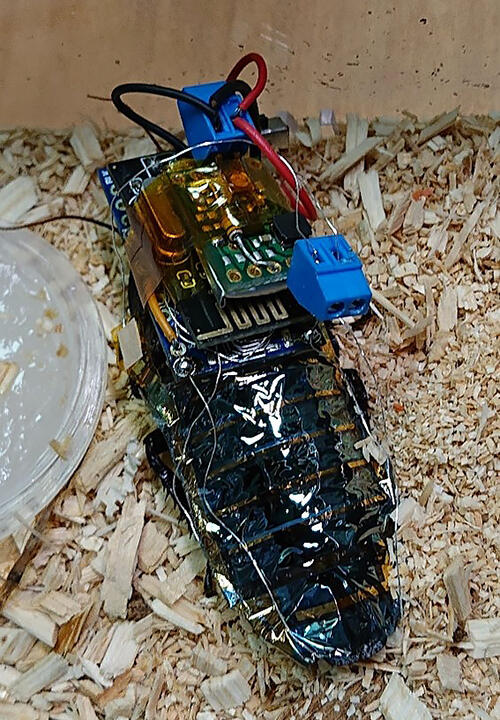An international research group that included full-time researcher Kenjiro Fukuda and senior researcher Takao Someya of the Cluster for Pioneering Research, RIKEN, Professor Shinjiro Umezu of the Graduate School of Creative Science and Engineering, Waseda University, and Associate Professor Hirotaka Sato of Nanyang Technological University, Singapore, has developed a 6-cm-long cyborg insect (Madagascar cockroach), which is powered by a rechargeable battery attached to a solar cell. The study was published in the online edition of npj Flexible Electronics.

Courtesy of RIKEN
An ultra-thin organic solar cell module was mounted to the abdomen of a Madagascar cockroach, and a wireless leg control module and battery were placed in a 3D backpack glued to its thorax. The equipment electrically stimulates the cerci (sensory organs in the tail), enabling the direction of travel to be manipulated when an operator sends an instruction to turn right or left.
Since the insects' abdominal segments partially overlap due to deformation during travel, ultra-thin organic solar cells (3 µm) fabricated on polymer film were attached to the abdomen in an interleaving manner with alternating adhesive and non-adhesive regions. This maintained the same performance as if nothing were affixed in an obstacle traversal test.
The ability to self-right when flipped on their backs decreases as the film gets thicker, but the team also confirmed that the success rate with the ultra-thin organic solar cells attached using the interleaving structure is almost the same as without any attachments.
The ultra-thin organic solar cell module attached to the cockroaches has an effective area of 3.96 square centimeters and a high output power of up to 17.2 milliwatts. After 30 minutes of charging in pseudo-sunlight with a live cyborg insect, the team confirmed that it was capable of approximately two minutes of continuous wireless communication and could move left and right as instructed.
Fukuda commented, "Robotic insects require lots of electricity to operate, but utilizing living organisms allows us to manipulate insects in an energy-efficient manner. The wireless mobile control module and battery are handmade, so they are bulky (6.5 grams). In the future, we would like to make them thinner and smaller and attach various sensors to them, enabling their use in applications such as search and rescue after disasters."
Journal Information
Publication: npj Flexible Electronics
Title: Integration of body-mounted ultrasoft organic solar cell on cyborg insects with intact mobility
DOI: 10.1038/s41528-022-00207-2
This article has been translated by JST with permission from The Science News Ltd.(https://sci-news.co.jp/). Unauthorized reproduction of the article and photographs is prohibited.




